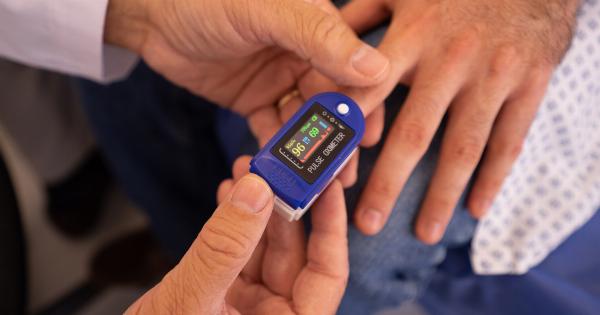Arteries play a crucial role in the functioning of our bodies. They are responsible for carrying oxygen-rich blood from the heart to various organs and tissues. However, certain conditions can affect the arteries, leading to various arterial problems.
In this article, we will explore the signs, symptoms, and treatments associated with arterial problems.
1. Atherosclerosis
Atherosclerosis is a condition characterized by the buildup of plaque inside the arteries. This plaque is made up of cholesterol, fat, calcium, and other substances found in the blood.
As the plaque accumulates, it hardens and narrows the arteries, restricting blood flow.
Signs and symptoms of atherosclerosis may vary depending on the affected arteries. However, common indicators include:.
- Chest pain or angina
- Shortness of breath
- Numbness or weakness in legs or arms
- Pain or cramping in legs during physical activity
- Erectile dysfunction
- High blood pressure
Treatment for atherosclerosis involves lifestyle modifications, such as adopting a healthy diet, regular exercise, quitting smoking, and managing stress. Medications, such as cholesterol-lowering drugs and blood thinners, may also be prescribed.
In severe cases, surgical procedures like angioplasty and bypass surgery may be necessary to restore blood flow.
2. Peripheral Artery Disease (PAD)
Peripheral artery disease, also known as PAD, is a common arterial problem that primarily affects the arteries in the legs. It occurs when fatty deposits accumulate in the arteries, leading to reduced blood flow to the legs and feet.
The signs and symptoms of PAD include:.
- Pain or cramping in the legs, thighs, or buttocks during physical activity
- Weakness or numbness in the legs
- Coldness in the lower leg or foot
- Delayed wound healing in the legs or feet
- Change in color of legs
Treatments for PAD typically involve lifestyle changes to improve blood flow, such as quitting smoking, regular exercise, and maintaining a healthy weight. Medications, such as blood thinners and cholesterol-lowering drugs, may be prescribed.
In more severe cases, angioplasty or bypass surgery may be required to restore blood flow.
3. Aortic Aneurysm
An aortic aneurysm is a localized bulging and weakening of the aorta, the largest artery in the body. It can occur in the abdominal aorta or the thoracic aorta.
Aortic aneurysms are often asymptomatic, but they can result in life-threatening complications if they rupture.
Signs and symptoms of an aortic aneurysm may include:.
- Deep, constant pain in the abdomen, chest, back, or flank
- Pulsating sensation in the abdomen
- Shortness of breath
- Dizziness
- Clamminess
Immediate medical attention is required if an aortic aneurysm is suspected. Treatment options depend on the size and location of the aneurysm.
Small aneurysms may be monitored closely, while larger ones may require surgical repair or endovascular stent grafting.
4. Raynaud’s Disease
Raynaud’s disease, also known as Raynaud’s phenomenon, is a condition that affects the blood vessels in the fingers and toes. It causes spasms in the arteries, leading to reduced blood flow and color changes in the affected areas.
Common signs and symptoms of Raynaud’s disease include:.
- Color changes in the skin of fingers and toes (pale, blue, or red)
- Cold fingers and toes
- Numbness or stinging sensation
- Throbbing or tingling upon warming
There is no cure for Raynaud’s disease, but various treatments can help manage the symptoms. These include avoiding triggers like cold temperatures, stress, and smoking.
Keeping hands and feet warm, exercising regularly, and medications to improve blood flow can also be beneficial.
5. Arteritis
Arteritis refers to the inflammation of the arteries. It can occur in various arteries throughout the body, including the temporal arteries in the head and neck.
The most common form of arteritis is giant cell arteritis, which primarily affects individuals over the age of 50.
Signs and symptoms of arteritis may include:.
- Tenderness or pain in the affected arteries
- Headaches
- Vision changes or blindness (in giant cell arteritis)
- Fever
- Jaw pain
Treatment for arteritis typically involves medications to reduce inflammation and manage symptoms. In some cases, surgery may be necessary to address complications caused by the inflamed arteries.
6. Thromboangiitis Obliterans (Buerger’s Disease)
Thromboangiitis obliterans, commonly known as Buerger’s disease, is a rare arterial condition that affects the small and medium-sized arteries, predominantly in the legs and arms. It is strongly associated with tobacco smoking.
The signs and symptoms of Buerger’s disease include:.
- Pain and tenderness in the limbs
- Cold hands or feet
- Ulcers on the fingers or toes
- Raynaud’s phenomenon
- Reduced ability to move the limbs
The most effective treatment for Buerger’s disease is quitting smoking. Other treatments aim to relieve symptoms and prevent complications, such as medications to improve blood flow and surgical procedures in severe cases.
7. Kawasaki Disease
Kawasaki disease is an uncommon childhood illness that primarily affects children under the age of 5. It causes inflammation in the walls of medium-sized arteries throughout the body, including the coronary arteries that supply blood to the heart.
The signs and symptoms of Kawasaki disease include:.
- Persistent high fever
- Redness in the eyes
- Swollen lymph nodes
- Rash on the body
- Swelling and redness of the hands and feet
Early treatment of Kawasaki disease is crucial to prevent complications, particularly damage to the coronary arteries. Treatment typically involves high doses of intravenous immunoglobulin and aspirin.
In severe cases, additional medications or procedures may be necessary.
8. Carotid Artery Disease
The carotid arteries, located in the neck, supply blood to the brain. Carotid artery disease occurs when these arteries become narrowed or blocked, often due to atherosclerosis.
Signs and symptoms of carotid artery disease may include:.
- Transient ischemic attacks (mini-strokes)
- Weakness or paralysis on one side of the body
- Sudden loss of vision or blurred vision
- Slurred speech
- Dizziness
Treatment for carotid artery disease aims to reduce the risk of stroke.
This can involve lifestyle changes, medications to lower blood pressure and cholesterol, and, in some cases, surgical procedures like carotid endarterectomy or carotid artery stenting.
9. Renal Artery Stenosis
Renal artery stenosis is a condition characterized by the narrowing of the arteries that supply blood to the kidneys. It often occurs due to atherosclerosis or fibromuscular dysplasia.
Signs and symptoms of renal artery stenosis may include:.
- High blood pressure
- Worsening kidney function
- Fluid retention or swelling
- Increased need to urinate
- Abdominal bruits (abnormal sounds heard with a stethoscope)
Treatment for renal artery stenosis can involve lifestyle changes, medications to control blood pressure and improve kidney function, or surgical procedures like angioplasty with or without stenting.
10. Pulmonary Embolism
A pulmonary embolism occurs when a blood clot gets lodged in one of the arteries in the lungs, blocking blood flow. It is often a result of a clot breaking off from a deep vein thrombosis (DVT) and traveling to the lungs.
The signs and symptoms of a pulmonary embolism may include:.
- Sudden shortness of breath
- Chest pain
- Rapid or irregular heartbeat
- Coughing up blood
- Fainting or lightheadedness
Treatment for pulmonary embolism typically involves medications to dissolve or prevent the enlargement of blood clots. Blood thinners may also be prescribed to prevent future clot formation.
In severe cases, procedures like catheter-directed thrombolysis or surgical interventions may be necessary.



























